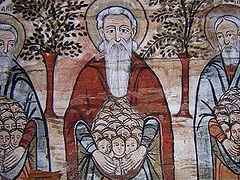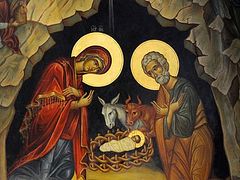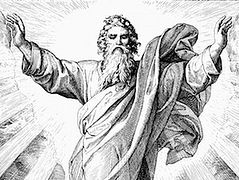Search the Scriptures; for in them ye think ye have eternal life: and they are they which testify of Me (Jn. 5:39). We modern Christians don’t perceive the Savior’s words in the way His listeners did. What was a continuation for them is a beginning for us. Unlike His earthly contemporaries, if we ever read the Old Testament, we do it fragmentarily and either after the New Testament or without any connection with it. As a result we (with a few exceptions of theologically educated people) have no concept of the unity of Scripture. We don’t proceed from the Old Testament in understanding the New. Many will say that there is no need to study the Scriptures, since we believe in Christ. But if we study it at least a little, our faith will become deeper and richer.
One can seldom find a Bible or a New Testament with parallel passages that help an inquisitive reader on his journey from the New Testament to the Old and back. But I have an old Bible with parallel passages, bought in the Soviet era. I will use it and the help of Archpriest Leonid Grilikhes, head of the Department of Biblical Studies at the Moscow Theological Academy. I will try to understand how the Old Testament texts, written thousands of years before His Birth, testify to the Son of God, and what the connection between the Old and New Testaments is.
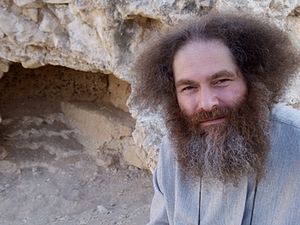 Archpriest Leonid Grilikhes —Father Leonid, let’s start our journey from chapter 2 of the Gospel of Matthew: There came wise men from the east to Jerusalem, saying, Where is He that is born King of the Jews? for we have seen His star in the east, and are come to worship Him (Mt. 2:2-3). We see the first reference to Is. 60:3, a solemn address to Jerusalem: And the Gentiles shall come to thy light, and kings to the brightness of thy rising; and the second reference in Num. 24:17—to the wise diviner Balaam who refused to transgress the Lord’s command and use magic against Israel: I shall see Him, but not now: I shall behold Him, but not nigh: there shall come a Star out of Jacob, and a Sceptre shall rise out of Israel. The wise men from the East are the heirs of Balaam. But further (Mt. 2:6) there’s no longer a connection, but a free retelling of Mic. 2:5: And thou Bethlehem, in the land of Judah…: for out of thee shall come a Governor, that shall rule My people Israel. (But in Micah we read the different: Out of thee shall he come forth unto Me that is to be ruler in Israel; whose goings forth have been from of old, from everlasting). So many links connect the evangelist’s narrative with the Old Testament. Is this a coincidence?
Archpriest Leonid Grilikhes —Father Leonid, let’s start our journey from chapter 2 of the Gospel of Matthew: There came wise men from the east to Jerusalem, saying, Where is He that is born King of the Jews? for we have seen His star in the east, and are come to worship Him (Mt. 2:2-3). We see the first reference to Is. 60:3, a solemn address to Jerusalem: And the Gentiles shall come to thy light, and kings to the brightness of thy rising; and the second reference in Num. 24:17—to the wise diviner Balaam who refused to transgress the Lord’s command and use magic against Israel: I shall see Him, but not now: I shall behold Him, but not nigh: there shall come a Star out of Jacob, and a Sceptre shall rise out of Israel. The wise men from the East are the heirs of Balaam. But further (Mt. 2:6) there’s no longer a connection, but a free retelling of Mic. 2:5: And thou Bethlehem, in the land of Judah…: for out of thee shall come a Governor, that shall rule My people Israel. (But in Micah we read the different: Out of thee shall he come forth unto Me that is to be ruler in Israel; whose goings forth have been from of old, from everlasting). So many links connect the evangelist’s narrative with the Old Testament. Is this a coincidence?
—The Gospel of Matthew is the earliest of the Gospels, and it’s closely related to the Holy Scriptures of the Jews. One gets the impression that Matthew doesn’t relate all the Gospel events, but only those that were highlighted by Old Testament prophecies. He concludes almost every episode of his narration with the words (as in 1:22): Now all this was done, that it might be fulfilled which was spoken of the Lord by the prophet, followed by a quotation from the Old Testament. The quotes cited by him aren’t arbitrary extracts from the Old Testament, but those that were traditionally considered messianic in the Second Temple period, informing about the coming Messiah. The Evangelist wants to show: look, what is recognized by everyone as messianic prophecies was fulfilled in the person of Jesus Christ. There were collections of messianic prophecies, the so-called testimonies; we find examples of these in the Dead Sea Scrolls. It seems likely that the apostles and early Christians who followed the Savior read messianic prophecies at their gatherings (from the Old Testament books or testimonies), and then commented on them in the light of the new historical experience that they had gained by following the Savior.
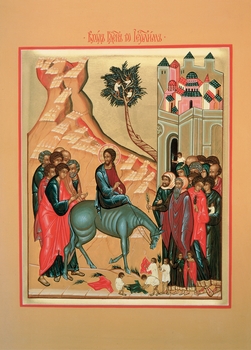 In the latest of the Gospels—that of John—it is said three times that some time after the Gospel events, the disciples remembered them in connection with Scripture (an indication of the earliest formation of the Gospel stories), for example: These things understood not His disciples at the first: but when Jesus was glorified, then remembered they that these things were written of Him (12:16). In this case, the disciples, prompted by the prophecy of Zechariah (Behold, thy King cometh unto thee: He is just, and having salvation; lowly, and riding upon an ass—Zech. 9:9), remembered how their Teacher had ridden a donkey into Jerusalem.
In the latest of the Gospels—that of John—it is said three times that some time after the Gospel events, the disciples remembered them in connection with Scripture (an indication of the earliest formation of the Gospel stories), for example: These things understood not His disciples at the first: but when Jesus was glorified, then remembered they that these things were written of Him (12:16). In this case, the disciples, prompted by the prophecy of Zechariah (Behold, thy King cometh unto thee: He is just, and having salvation; lowly, and riding upon an ass—Zech. 9:9), remembered how their Teacher had ridden a donkey into Jerusalem.
There isn’t a single New Testament book that doesn’t contain quotations from the Old Testament. There are literal, verbal quotations, but more often they are allusions... Dozens of references are given to each page of the New Testament. Most of them are in the Revelation of John. It has 424 verses, and only 126 have no references to the Old Testament. Interestingly, there isn’t a single word-for-word quote. John never quotes the Old Testament verbatim. He uses Old Testament imagery. The two olive trees, and the two candlesticks standing before the God of the earth (Rev. 11:4) is an image from the Book of Zechariah (cf. 4:3), and the horses of the Apocalypse were taken from the same place (cf. Zech. 1:8). And the sixth angel poured out his vial upon the great river Euphrates; and the water thereof was dried up (Rev. 16:12). We find a reference to Jer. 50:38: A drought is upon her waters; and they shall be dried up. Not only John’s language, but also his thinking is saturated with the Old Testament texts, and he can’t write in any other way than in the figurative language of the Old Testament.
The Apostle Paul loves to pile quotations one on top of the other. Sometimes he throws a stream of quotes at his readers. For example, in chapter 3 of the Epistle to the Romans, where he speaks of the corruption of morals, each of his theses is an Old Testament quotation: Their feet are swift to shed blood (Rom. 3:15)—this is from Prov. 1:16: For their feet run to evil, and make haste to shed blood. And here is Ps. 35:2: There is no fear of God before his eyes (= There is no fear of God before their eyes. Rom. 3:18). There are seven quotations in a row.
—The Savior Himself speaks this language. But, reading His words in the Gospels, we often don’t recognize ancient quotations and don’t feel the connection between His preaching and Scripture.
—Unlike us, the Savior’s milieu knew the Scriptures by heart. At the time there was no division into chapters and verses. Now we say: chapter such and such, verse such and such. But they just said the first two or three words of a verse, and everyone understood what was meant. When the Lord referred to the Old Testament, everyone got it and saw connections with the well-known books. For example, when He says that the Kingdom of Heaven is like leaven, which a woman took and hid in three measures of meal, till the whole was leavened (Lk. 13:21), we see no allusion to the Old Testament. But those around the Savior immediately recalled the visit of three men to Abraham. Abraham tells Sarah to make ready quickly three measures of fine meal, knead it, and make cakes upon the hearth (Gen. 18:6). Those who heard this understood that the bread of love that a person offers to God is from now on leavened by the Kingdom of Heaven, by the love of God.
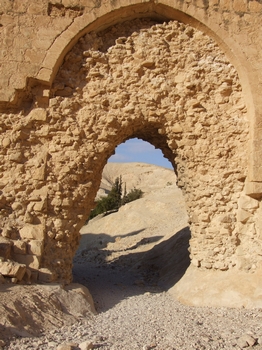 Another example is the parable of the vineyard (Mt. 21:33–46). All the images of this parable—a vineyard, a winepress, a tower, and hedge—are taken from the song that opens chapter 5 of the book of Isaiah. But while in the Old Testament the Vineyard of the Lord of hosts is the house of Israel (Is. 5:7), the question remains in the Gospel parable as to what the vineyard is. Below, the Lord Himself gives the answer: Therefore say I unto you, The Kingdom of God shall be taken from you, and given to a nation bringing forth the fruits thereof (Mt. 21:43). The vineyard is the Kingdom of Heaven, revealed with the Coming of Christ; and in order to remain a vineyard and bear fruit Israel must be grafted into Him (accept Him). We find a continuation of this theme in the Gospel of John, where the Lord says: I am the vine, ye are the branches (15:5).
Another example is the parable of the vineyard (Mt. 21:33–46). All the images of this parable—a vineyard, a winepress, a tower, and hedge—are taken from the song that opens chapter 5 of the book of Isaiah. But while in the Old Testament the Vineyard of the Lord of hosts is the house of Israel (Is. 5:7), the question remains in the Gospel parable as to what the vineyard is. Below, the Lord Himself gives the answer: Therefore say I unto you, The Kingdom of God shall be taken from you, and given to a nation bringing forth the fruits thereof (Mt. 21:43). The vineyard is the Kingdom of Heaven, revealed with the Coming of Christ; and in order to remain a vineyard and bear fruit Israel must be grafted into Him (accept Him). We find a continuation of this theme in the Gospel of John, where the Lord says: I am the vine, ye are the branches (15:5).
—Why was the Old Testament language so necessary for the Teacher and His disciples? Why are there so many quotes?
—This was the consciousness of Israel’s society: If someone said something and wanted his speech to be authoritative and listened to, he based it on Scripture. Any argumentation was reinforced by the authority of Scripture. In Acts (17:2–3) we read: And Paul, as his manner was, went in unto them, and three sabbath days reasoned with them out of the scriptures, Opening and alleging, that Christ must needs have suffered, and risen again from the dead; and that this Jesus… is Christ. And below (Acts 28:23) we read: To whom he expounded and testified the Kingdom of God, persuading them concerning Jesus, both out of the law of Moses, and out of the prophets, from morning till evening. Testimonies could only be given from Scripture, otherwise no one would have listened to them. But the testimony gains special power in the mouth of the Savior when He, resurrected but unrecognized, turns to His companions on the road to Emmaus (Lk. 24:25-27): Then He said unto them, O fools, and slow of heart to believe all that the prophets have spoken: Ought not Christ to have suffered these things, and to enter into His glory? And beginning at Moses and all the prophets, He expounded unto them in all the Scriptures the things concerning Himself.
—It seems that to see in the New Testament only the fulfillment of the Old is to pour new wine into old bottles (Lk. 5:37).
—St. Ignatius of Antioch in his epistle to the Philadelphians writes: “I heard some saying, If I do not find it in the ancient, Scriptures, I will not believe the Gospel… But to me, Jesus Christ is in the place of all that is ancient.” This is a very interesting answer. Here’s the problem of the correlation between the authority of the Torah and that of the Savior: Which is higher? This problem arises in the New Testament. Even there the Savior’s authority isn’t necessarily confirmed by the authority of the Torah or other Old Testament books. For the Jews the Torah was absolute authority. It was subject to interpretation, with each interpreter having his own authority, but the authority of Scripture was absolute, while that of the interpreter was secondary. In the Gospels the Lord many times asserts His authority above that of the Torah. Ye have heard that it was said of them of old time, Thou shalt not kill; and whosoever shall kill shall be in danger of the judgment: but I say unto you, That whosoever is angry with his brother without a cause shall be in danger of the judgment (Mt. 5:21-22). This was repeated many times in the Sermon on the Mount: But I say unto you. It must have been shocking because no Jewish interpreter could say: “The Torah says so and so, but now I tell you so and so.” Or when He says: I am the way, the truth, and the life: no man cometh unto the Father, but by Me (Jn. 14:6), He applies to Himself the definitions that the Jews applied to the Torah. One can read in Jewish sources: “He who reads the Torah and lives it out is like someone who has built his house upon a rock.” But the Lord says: Whosoever heareth My sayings…, he is like a man which built an house…, and laid the foundation on a rock (Lk. 6:47-48). He is the source of Divine wisdom, so His authority is higher than that of Scripture. When a rich young man approaches Jesus and asks what he should do to inherit eternal life (Mk. 10:17–23), the Lord first invites him to fulfill the Torah and the commandments. Then it emerges that the commandments aren’t everything—there is something above them, and you can take the next step. This is about the correlation of authorities: There is the Law, and there is something more than the Law—to be with Christ. Christ is higher than the Torah.
—This is where the conflict between the Old Testament and the New Testament consciousness stems from: Israel is waiting for the Messiah; He comes: He is the One—yet not the One Who was expected. Old Testament testimonies do not predict gospel events with precision. The connection between them and the gospel is not always easy to see.
—At the end of the Second Temple era, the Jews had already formed the doctrine of the Messiah. It portrayed him as a political and spiritual leader, but there was no idea that this Messiah would be crucified on the Cross and rise from the dead. Although it was important for the apostles and the first Christians to see in Christ the fulfillment of messianic prophecies, they went beyond the doctrine that had taken shape by that time. There is an interesting passage in the Gospel of John (20:3–9): John and Peter came into the sepulcher, saw the linen clothes and the napkin, and believed in the Resurrection, for as yet they knew not the Scripture, that He must rise again from the dead. “For” is an inaccurate translation. “Though” would be more accurate. They came to believe, although they hadn’t known from traditional Jewish interpretations of Scripture that He would rise from the dead. No interpretations spoke of death and resurrection! It was necessary to believe contrary to the tradition and the prevailing doctrine of the Messiah.
 In the first part of the Gospel of Matthew, before the Passion almost all the narratives are supported by Old Testament quotations, and once the Evangelist reaches the Passion, the Old Testament references end. Why? Matthew refers to the passages that are traditionally accepted as messianic, and he has nothing base it on when it comes to the Messiah’s suffering. There is no concept of a suffering Christ within the traditional doctrine. But, if we look at the latest of the Gospels—of John, the picture will be opposite. Speaking of the Crucifixion, John recalls the Scriptures throughout the narrative: that they cast lots, divided Christ’s clothes, gave Him vinegar, pierced His side with a lance, and didn’t break His legs—John refers to the Old Testament everywhere. What does it mean? In the forty or fifty years that separated the earliest Gospel (of Matthew) and the latest (of John) the Church had moved away from the traditional concept of messianic places and learned to read the whole Old Testament as a single prophecy about the Messiah.
In the first part of the Gospel of Matthew, before the Passion almost all the narratives are supported by Old Testament quotations, and once the Evangelist reaches the Passion, the Old Testament references end. Why? Matthew refers to the passages that are traditionally accepted as messianic, and he has nothing base it on when it comes to the Messiah’s suffering. There is no concept of a suffering Christ within the traditional doctrine. But, if we look at the latest of the Gospels—of John, the picture will be opposite. Speaking of the Crucifixion, John recalls the Scriptures throughout the narrative: that they cast lots, divided Christ’s clothes, gave Him vinegar, pierced His side with a lance, and didn’t break His legs—John refers to the Old Testament everywhere. What does it mean? In the forty or fifty years that separated the earliest Gospel (of Matthew) and the latest (of John) the Church had moved away from the traditional concept of messianic places and learned to read the whole Old Testament as a single prophecy about the Messiah.
—But we see serious bewilderment when we begin to trawl through the references from the New Testament to the Old. Many quotations seem to be taken out of context and artificially drawn into the New Testament narrative. “How does it follow that this is about Christ?”—this is a fairly common question.
—This problem is actively discussed by liberal New Testament criticism: do the New Testament authors quote the Old Testament correctly and don’t they take these extracts out of context, putting some new meaning into them? No, it isn’t the case! There is a remarkable study by Dodd,1 where he shows that the passages Matthew refers to weren’t drawn in by him or his contemporaries; rather, even then, in antiquity, they were understood as messianic prophecies.
The most vivid example: Out of Egypt have I called My Son (Mt. 2:15). Matthew clearly applies these words to Christ. And if we read the Book of Hosea (11:1), which the evangelist quotes: When Israel was a child, then I loved him, and called my son out of Egypt, the prophet speaks of Israel—a whole people brought out of Egyptian slavery. But Dodd notes that it is necessary to consider not only the immediate context, but also a broader one. In the Book of Hosea and in other books of the eighth century B.C., the exodus of the Jews from Egypt was interpreted as a prototype of the future exodus. In Numbers there are prophetic songs, parables of Balaam. He begins them with the exodus of the Jews from Egypt and finishes with the last days: I shall see Him, but not now: I shall behold Him, but not nigh: there shall come a Star out of Jacob, and a Sceptre shall rise out of Israel (Num. 24:17). Thus, in the Pentateuch and in the early prophets, Hosea and Isaiah, the idea is clearly expressed that the exodus of the Jews from Egypt is a prototype of the future exodus, and Matthew, quoting Hosea, remains faithful to the Old Testament tradition. The new exodus takes place in the Person of the Messiah—Christ. Matthew—this is especially noticeable in the first five chapters—portrays Jesus Christ in the image of the new Israel, which is typified by the history of ancient Israel. Israel came out of Egypt—the Lord also came out of Egypt.
The passage through the waters of Baptism corresponds to the passage through the Red Sea. The forty-day fast is correlated with the forty-year wandering of Israel in the wilderness and the temptations to which the people were subjected. The Savior accomplishes what historical Israel couldn’t. Historical Israel fell away, was tempted, and apostatized from God. It is no coincidence that when the Lord was being tempted by satan in the wilderness (Mt. 4), He answered with words from the Scriptures. Man shall not live by bread alone (4:4)—this is from Deut. 8:3: Man doth not live by bread only. The other two answers are from the same book. The Savior quotes from Deuteronomy, which speaks of the temptation of Israel in the wilderness, three times. The temptation that historical Israel couldn’t cope with, but which Jesus Christ did.


